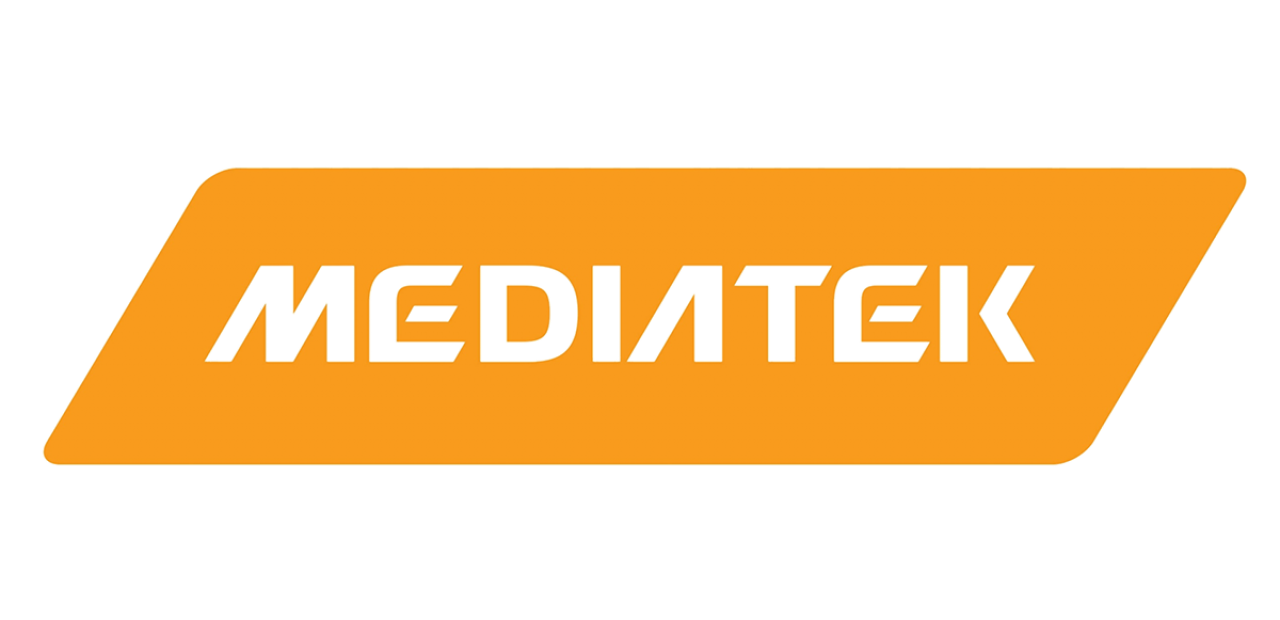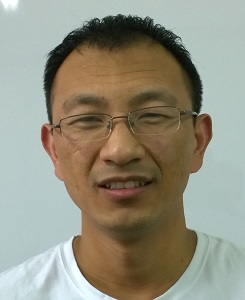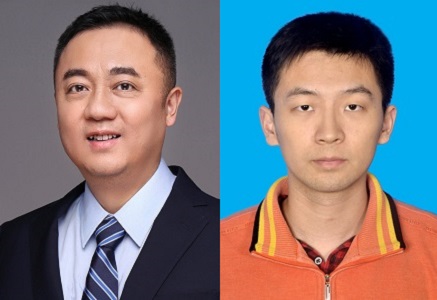List of NTIRE 2021 papers
papers (pdf, suppl. mat) available at https://openaccess.thecvf.com/CVPR2021_workshops/NTIRE
Multi-Scale Self-Calibrated Network for Image Light Source Transfer
Yuanzhi Wang, Tao Lu, Yanduo Zhang, Yuntao Wu
[video][slides]
Physically Inspired Dense Fusion Networks for Relighting
Amirsaeed Yazdani, Tiantong Guo, Vishal Monga
[video][slides]
Noise Conditional Flow Model for Learning the Super-Resolution Space
Younggeun Kim, Donghee Son
[video]
NTIRE 2021 Challenge on Image Deblurring
Seungjun Nah, Sanghyun Son, Suyoung Lee, Radu Timofte, Kyoung Mu Lee
Long-Tailed Recognition of SAR Aerial View Objects by Cascading and Paralleling Experts
Cheng-Yen Yang, Hung-Min Hsu, Jiarui Cai, Jenq-Neng Hwang
KernelNet: A Blind Super-Resolution Kernel Estimation Network
Mehmet Yamac, Baran Ataman, Aakif Nawaz
Edge Guided Progressively Generative Image Outpainting
Han Lin, Maurice Pagnucco, Yang Song
Robust Image-to-Image Color Transfer Using Optimal Inlier Maximization
Magnus Oskarsson
[video]
EBSR: Feature Enhanced Burst Super-Resolution With Deformable Alignment
Ziwei Luo, Lei Yu, Xuan Mo, Youwei Li, Lanpeng Jia, Haoqiang Fan, Jian Sun, Shuaicheng Liu
Learning a Cascaded Non-Local Residual Network for Super-Resolving Blurry Images
Haoran Bai, Songsheng Cheng, Jinhui Tang, Jinshan Pan
NTIRE 2021 Learning the Super-Resolution Space Challenge
Andreas Lugmayr, Martin Danelljan, Radu Timofte
(ASNA) An Attention-Based Siamese-Difference Neural Network With Surrogate Ranking Loss Function for Perceptual Image Quality Assessment
Seyed Mehdi Ayyoubzadeh, Ali Royat
Deep Learning-Based Distortion Sensitivity Prediction for Full-Reference Image Quality Assessment
Sewoong Ahn, Yeji Choi, Kwangjin Yoon
Beyond Joint Demosaicking and Denoising: An Image Processing Pipeline for a Pixel-Bin Image Sensor
S M A Sharif, Rizwan Ali Naqvi, Mithun Biswas
[video]
SRKTDN: Applying Super Resolution Method to Dehazing Task
Tianyi Chen, Jiahui Fu, Wentao Jiang, Chen Gao, Si Liu
Shadow Removal With Paired and Unpaired Learning
Florin-Alexandru Vasluianu, Andres Romero, Luc Van Gool, Radu Timofte
HDRUNet: Single Image HDR Reconstruction With Denoising and Dequantization
Xiangyu Chen, Yihao Liu, Zhengwen Zhang, Yu Qiao, Chao Dong
S3Net: A Single Stream Structure for Depth Guided Image Relighting
Hao-Hsiang Yang, Wei-Ting Chen, Sy-Yen Kuo
Region-Adaptive Deformable Network for Image Quality Assessment
Shuwei Shi, Qingyan Bai, Mingdeng Cao, Weihao Xia, Jiahao Wang, Yifan Chen, Yujiu Yang
Single Image Dehazing Using Bounded Channel Difference Prior
Xuan Zhao
DeepObjStyle: Deep Object-Based Photo Style Transfer
Indra Deep Mastan, Shanmuganathan Raman
Restoration of Video Frames From a Single Blurred Image With Motion Understanding
Dawit Mureja Argaw, Junsik Kim, Francois Rameau, Chaoning Zhang, In So Kweon
[video][slides]
IQMA Network: Image Quality Multi-Scale Assessment Network
Haiyang Guo, Yi Bin, Yuqing Hou, Qing Zhang, Hengliang Luo
LTNet: Light Transfer Network for Depth Guided Image Relighting
Yu Zhu, Bosong Ding, Chenghua Li, Wanli Qian, Fangya Li, Yiheng Yao, Ruipeng Gang, Chunjie Zhang, Jian Cheng
Pixel-Guided Dual-Branch Attention Network for Joint Image Deblurring and Super-Resolution
Si Xi, Jia Wei, Weidong Zhang
[video][project page]
Unifying Guided and Unguided Outdoor Image Synthesis
Muhammad Usman Rafique, Yu Zhang, Benjamin Brodie, Nathan Jacobs
[poster]
Efficient Space-Time Video Super Resolution Using Low-Resolution Flow and Mask Upsampling
Saikat Dutta, Nisarg A. Shah, Anurag Mittal
A Two-Stage Deep Network for High Dynamic Range Image Reconstruction
S M A Sharif, Rizwan Ali Naqvi, Mithun Biswas, Sungjun Kim
EGB: Image Quality Assessment Based on Ensemble of Gradient Boosting
Dounia Hammou, Sid Ahmed Fezza, Wassim Hamidouche
[video]
Improved Noise2Noise Denoising With Limited Data
Adria Font Calvarons
Variational AutoEncoder for Reference Based Image Super-Resolution
Zhi-Song Liu, Wan-Chi Siu, Li-Wen Wang
Self-Supervised Multi-Task Pretraining Improves Image Aesthetic Assessment
Jan Pfister, Konstantin Kobs, Andreas Hotho
[poster]
Overparametrization of HyperNetworks at Fixed FLOP-Count Enables Fast Neural Image Enhancement
Lorenz K. Muller
[video]
EDPN: Enhanced Deep Pyramid Network for Blurry Image Restoration
Ruikang Xu, Zeyu Xiao, Jie Huang, Yueyi Zhang, Zhiwei Xiong
NTIRE 2021 Challenge on Burst Super-Resolution: Methods and Results
Goutam Bhat, Martin Danelljan, Radu Timofte
[video]
NTIRE 2021 NonHomogeneous Dehazing Challenge Report
Codruta O. Ancuti, Cosmin Ancuti, Florin-Alexandru Vasluianu, Radu Timofte
Guidance Network With Staged Learning for Image Enhancement
Luming Liang, Ilya Zharkov, Faezeh Amjadi, Hamid Reza Vaezi Joze, Vivek Pradeep
[video]
NTIRE 2021 Challenge for Defocus Deblurring Using Dual-Pixel Images: Methods and Results
Abdullah Abuolaim, Radu Timofte, Michael S. Brown
Toward Interactive Modulation for Photo-Realistic Image Restoration
Haoming Cai, Jingwen He, Yu Qiao, Chao Dong
[poster]
Generic Image Restoration With Flow Based Priors
Leonhard Helminger, Michael Bernasconi, Abdelaziz Djelouah, Markus Gross, Christopher Schroers
NTIRE 2021 Challenge on Quality Enhancement of Compressed Video: Dataset and Study
Ren Yang, Radu Timofte
[video]
ADNet: Attention-Guided Deformable Convolutional Network for High Dynamic Range Imaging
Zhen Liu, Wenjie Lin, Xinpeng Li, Qing Rao, Ting Jiang, Mingyan Han, Haoqiang Fan, Jian Sun, Shuaicheng Liu
Adaptive Spatial-Temporal Fusion of Multi-Objective Networks for Compressed Video Perceptual Enhancement
He Zheng, Xin Li, Fanglong Liu, Lielin Jiang, Qi Zhang, Fu Li, Qingqing Dang, Dongliang He
A Two-Branch Neural Network for Non-Homogeneous Dehazing via Ensemble Learning
Yankun Yu, Huan Liu, Minghan Fu, Jun Chen, Xiyao Wang, Keyan Wang
[video]
NTIRE 2021 Depth Guided Image Relighting Challenge
Majed El Helou, Ruofan Zhou, Sabine Susstrunk, Radu Timofte
Weighted Multi-Kernel Prediction Network for Burst Image Super-Resolution
Wooyeong Cho, Sanghyeok Son, Dae-Shik Kim
Cross Modality Knowledge Distillation for Multi-Modal Aerial View Object Classification
Lehan Yang, Kele Xu
[video]
Dual Contrastive Learning for Unsupervised Image-to-Image Translation
Junlin Han, Mehrdad Shoeiby, Lars Petersson, Mohammad Ali Armin
Single Image HDR Synthesis Using a Densely Connected Dilated ConvNet
Akhil K. A., Jiji C. V.
[video]
DW-GAN: A Discrete Wavelet Transform GAN for NonHomogeneous Dehazing
Minghan Fu, Huan Liu, Yankun Yu, Jun Chen, Keyan Wang
[video]
NTIRE 2021 Challenge on Video Super-Resolution
Sanghyun Son, Suyoung Lee, Seungjun Nah, Radu Timofte, Kyoung Mu Lee
NTIRE 2021 Challenge on Quality Enhancement of Compressed Video: Methods and Results
Ren Yang, Radu Timofte
[video]
PnG: Micro-Structured Prune-and-Grow Networks for Flexible Image Restoration
Wei Jiang, Wei Wang, Shan Liu, Songnan Li
[slides]
HINet: Half Instance Normalization Network for Image Restoration
Liangyu Chen, Xin Lu, Jie Zhang, Xiaojie Chu, Chengpeng Chen
[video]
NTIRE 2021 Multi-Modal Aerial View Object Classification Challenge
Jerrick Liu, Nathan Inkawhich, Oliver Nina, Radu Timofte
Three Gaps for Quantisation in Learned Image Compression
Shi Pan, Chris Finlay, Chri Besenbruch, William Knottenbelt
NTIRE 2021 Challenge on High Dynamic Range Imaging: Dataset, Methods and Results
Eduardo Perez-Pellitero, Sibi Catley-Chandar, Ales Leonardis, Radu Timofte
VSpSR: Explorable Super-Resolution via Variational Sparse Representation
Hangqi Zhou, Chao Huang, Shangqi Gao, Xiahai Zhuang
[video]
Symmetric Parallax Attention for Stereo Image Super-Resolution
Yingqian Wang, Xinyi Ying, Longguang Wang, Jungang Yang, Wei An, Yulan Guo
Multi-Modal Bifurcated Network for Depth Guided Image Relighting
Hao-Hsiang Yang, Wei-Ting Chen, Hao-Lun Luo, Sy-Yen Kuo
Efficient CNN Architecture for Multi-Modal Aerial View Object Classification
Casian Miron, Alexandru Pasarica, Radu Timofte
[poster]
Attention! Stay Focus!
Tu Vo
Multi-Scale Selective Residual Learning for Non-Homogeneous Dehazing
Eunsung Jo, Jae-Young Sim
NTIRE 2021 Challenge on Perceptual Image Quality Assessment
Jinjin Gu, Haoming Cai, Chao Dong, Jimmy S. Ren, Yu Qiao, Shuhang Gu, Radu Timofte
Instagram Filter Removal on Fashionable Images
Furkan Kinli, Baris Ozcan, Furkan Kirac
[video]
Boosting the Performance of Video Compression Artifact Reduction With Reference Frame Proposals and Frequency Domain Information
Yi Xu, Minyi Zhao, Jing Liu, Xinjian Zhang, Longwen Gao, Shuigeng Zhou, Huyang Sun
Single-Image HDR Reconstruction With Task-Specific Network Based on Channel Adaptive RDN
Guannan Chen, Lijie Zhang, Mengdi Sun, Yan Gao, Pablo Navarrete Michelini, YanHong Wu
[video][slides]
SRFlow-DA: Super-Resolution Using Normalizing Flow With Deep Convolutional Block
Younghyun Jo, Sejong Yang, Seon Joo Kim
[video]
Perceptual Image Quality Assessment With Transformers
Manri Cheon, Sung-Jun Yoon, Byungyeon Kang, Junwoo Lee
Wide Receptive Field and Channel Attention Network for JPEG Compressed Image Deblurring
Donghyeon Lee, Chulhee Lee, Taesung Kim












